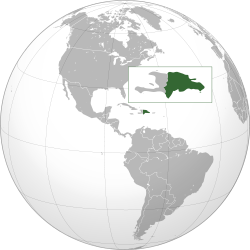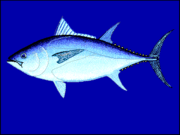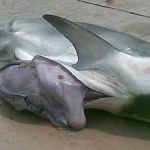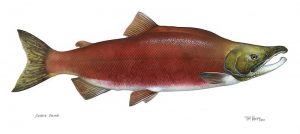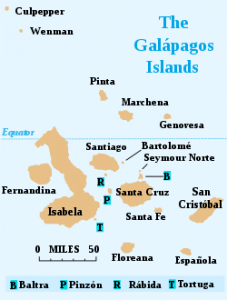Category Archives: Fishing
Boat Captain Facing 50 Large in Fines For Violations of Fishery Laws
A boat captain from the Dominican Republic has to pay some $50,000 in fines after he and his 28 crewman pleaded guilty to numerous infractions and violations of fisheries law.
Captain Eduardo Diaz and his 28 member crew were brought before Deputy Chief Magistrate Carolita Bethel yesterday. They literally had the book thrown at them in terms of violations. They were charged with engaging in foreign fishing, possession of prohibited apparatus, posession of undersized crawfish and grouper.
The court dockets state that on the 11th of October the men were discovered fishing in waters belonging to the Bahamas, aboard the small fishing boat “Adrian I”
The fishing boat was caught by a Cutter with the United States Coast Guard to the east of Ragged Island in the Columbus Bank.
It was reported that the men were carrying quite an odd assortment of illegal things such as nine air compressors, nine spear guns, a large portion of undersized crawfish and some one and a half tons of grouper which weighed less than two kilograms each.
The captain and crew of the “Adrian I”, with the aid of a translator, plead guilty to all charges laid against them. Magistrate Bethel went a little more lenient on them than the circumstances provided for, as they did not waste any of the court’s time.
Diaz, being the captain, was given a choice; cough up the $50,000 fine, or spend a year in jail, his crew was immediately deported, and all equipment confiscated. There was no mention as to whether he would get to keep the “Adrian I” or not, but one imagines he might sell it to pay for the fine.
Bluefin Populations Change In Cloudy Waters
A very interesting report has made its way to me from a meeting taking place in Madrid which is taking a gander at tuna populations and catches.
The question at the focal point of this report is: Can the Mediterranean bluefin industry ever be properly monitored?
The bluefin have become ever so popular as of late, and it’s causing quite a stir as people try to figure out the ecological, commercial and even political ramifications.
The meeting will begin with bringing together certain key members of the Standing Committee on Research and Statistics (SCRS). This group acts as an adviser to the representatives from the International Commission for the Conservation of Atlantic Tunas (Iccat).
Anyone who is well briefed on the subject of Tuna knows that the Atlantic bluefin is facing some very serious problems, as its population has been declining quite rapidly, due to the increased illegal fishing operations being run in the Mediterranean.
The major players which are causing this sudden decline in the wild stocks of bluefin are purse sein boats, which utilize huge nets to circle around the bluefin and scoop them up when they are at their most vulnerable – as they spawn.
Many of these fish are then whisked away to ranches and farms where they are kept in captivity in horrendously cramped quarters, until they are big enough to sell on the market.
This is a huge issue, hence the emergency meetings being called. Nobody has an exact figure, or an exact plan, but they are working round the clock to help save the bluefin from extinction, which is a big possibility if things don’t turn themselves around.
Whole Foods to Stop Selling Over-Fished Species In Time For Earth Day 2013

Green means “go ahead and shop till you drop”, yellow means “Caution. some concerns are being raised with the species”, and red means “you really shouldn’t be buying this product at all”.
They are aiming to phase out all products which are classified as “red”, which means that they are highly over fished and at risk, by Earth Day in the year 2013.
They have partnered up with Monterey Bay Aquarium and Blue Ocean Institute to help them categorize their products. Whole Foods is the first such national grocer which will have such a system in place, and it is causing waves throughout the industry.
Both Monterey Bay Aquarium and Blue Ocean Institute are well known and respected for their science-based seafood programs. They painstakingly evaluate species and the fisheries which reel them in, and categorize them based on life history, abundance, habitat impacts, fishery management practices and bycatch.
It’s good to see big business finally taking an interest in keeping the Earth and its oceans in prime condition, and not just worrying about their bottom line.
Shocking Suprise – Human foot found in shark (Graphic Pictures)
Just as a deep sea fisherman was about to cut away a hook from a wide open mouth of a shark to let it go back on its merry way to the sea, the most surprising thing sprung forth.. A human foot.
“Everything was intact from the knee down,” commented Humphrey Simmons, a Bahamian investment banker, “it was mangled, but there was still flesh on the bone.”
What a morbid way to end such a beautiful day of fishing for Mr. Simmons and his two cohorts, who spent the majority of their morning trying to get away from the sea beasts.
When they finally managed to reel in the curiously heavy and bulging Tiger shark, at the Defence Force’s Coral Harbor base and they got around to sticking a knife in him, to see what was what, a headless body came tumbling out of the freshly opened cavity. The leg which the shark so unceremoniously coughed up appeared to belong to the man, as he too was missing a foot. Upon closer examination of the sharks insides, they indeed found the rest of the man; severed right leg, two severed arms and a torso in two sections.
As Mr Simmons’ ten year old daughter calmly pointed out, the shark had the feast all to himself. There were no signs of a struggle, or fighting from other sharks. The theory going around now is that the unlucky man drowned, and then was scarfed up by the shark.
- The caught shark
- Cut open
- The foot
Divers Haul Up Oldest Drinkable Beer From Baltic:
Well now, first it was champagne, now it’s beer.. The Baltic Sea seems to be a fully stocked bar in it’s own right. What’s next? A martini shaken not stirred?
Divers have managed to drag up an astounding find. This past Thursday they drudged up the world’s oldest drinkable beer from a shipwreck in the Baltic Sea this past Thursday, just in time for the weekend. This happens just days after efforts began to bring up cases of 200 year old champagne, officials in the area commented.
“We believe these are by far the world’s oldest bottles of beer,” a spokesman for the local government of Åland, Rainer Juslin, said in a statement.
The bottles of beer were discovered in a shipwreck which is though to be somewhere in the viciniy of 200 years old, as divers were just beginning to bring up bottles of champagne, discovered back in July. One question this reporter begs to ask… Is why the heck have they taken so long to start bringing up the bubbly?
The haul, which was found intact on the seabed somewhere around 50 meters down beneath the waves. The find comes from a wreck believed to have sunk off the coast sometime in the 18th century, officials of Aaland have postulated.
“The constant temperature and light levels have provided optimal conditions for storage, and the pressure in the bottles has prevented any seawater from seeping in through the corks,” a statement this Thurday said.
Angler Breaks World Record for Fishing: 1,000 Different Species Caught!
Well it certainly seems to be a time for breaking records. An angler has just become the first person in the world to break the ultimate fishing record, by reeling in an astounding 1,000 different species of fish.
Steve Wozniak, a native Californian 47 years of age, has spent a decade on his quest for mastering the creatures of the sea, and he has made his rounds in over 63 different countries to accomplish his goal. He has spent an astonishing 20,000 hours fishing on piers, beaches, riverbanks and boats just waiting for a fish to take the line. He has caught everything from a small minnow to a giant 900 pound beast of a shark.
Steve has shelled out an amazing amount of money, more than 50,000 Great Brish Pounds and has stored up somewhere in the neighborhood of one million air miles by traipsing around the world, his rod and his tackle box his only companion for 10 years.
Steve has made his rounds on every continent minus Antarctica, including such places as the exotic Isle of Wight and the far reaches of Cambodia.
He has managed to capture just about every freshwater fish which calls Britain home and has spent 2 years and 4,000 Great British Pounds trying to land himself an Atlantic salmon from Scotland.
What can we say? The man loves his fishing. In a week full of broken records, we’d like to welcome Steve to the ranks of the Big Fish.
World Record Tilapia Reeled in St. Lucie River
The black depths of the St. Lucie River’s South Fork have really been making waves, and provided quite a catch for an angler.
This past Tuesday evening, Pamela Henry was having a nice quiet time fishing from her dock on the waterway. As she was lazily tossing balls of dough into the water, some of which had peanut butter, she gazed upon a myriad of different kinds of fish which fought over them. However, after repeatedly seeing the mouth of a big “snapper-like looking fish,” Henry thought it was high time to grab a pole and try her luck.
“I just grabbed the first rod I could find and it ended up being one of my old spinning outfits,” commented Henry. “It had 20-pound test line and no leader, but I was going to catch that fish.”
Henry opted to use a soft dough ball for the bait – as she explained that the fish don’t like hard balls- and cast her line into the water, complete with a bobber made of styrofoam.
Reeling in Tilapia with a rod is not an easy thing to accomplish, Henry explained. First of all, they are vegetarians, but secondly, there is something off about the way they feed.
“You have to be patient with a tilapia. They suck in the bait, then spit it out again before they really eat it,” she went on to explain.
Well all her patience paid off, as she reeled in a whopper of a Tilapia, weighing in at 9 pounds, 6 ounces. By all accounts it’s a record breaker.. Congratulation Pamela!
Fraser sockeye count climbs to 30 million
The Fraser River is being overrun by sockeye salmon.
Officials from the fishery are now estimating that the number of sockeye returning has climbed to roughly 30 million, which is a 5 million increase from their previous count of 25 million earlier this week.
This is the highest number of returning salmon recorded since 1913, when around 39 million sockeye made their way back to the Fraser River, just before a rock slide into the river gave birth to Hells Gate and caused a huge disruption in the stocks of salmon for decades.
The run this year is looking to be almost three times higher than the 11 million originally estimated before the season started.
The late run this year is projected to be large as well, due to the fact that it will include the peak cycle Adam River run.
However, this run has really turned a lot of heads, as the Pacific Salmon Commission this past Friday has raised its estimate of late run sockeye to an astounding 21.4 million, which is a far cry from their 8.5 million prediction prior to the start of the season.
Up till now, more than 6.4 million salmon have swum their way upriver, avoiding the gilnetters on the lower Fraiser, as compared to the 5.7 million which were estimated as having being caught.
And there doesn’t seem to be any sign of a shortage.
It’s good to see mother nature replenishing her stocks, after such a long “dry spell”. Hopefully this is just a taste, and the salmon runs will continue to be as plentiful in the years to come.
Trawlermen from Shetland Illegally Reeled in 15M GPB Worth of Herring and Mackeral
Six skippers are facing unlimited fines and confiscation orders to the tune of millions of pounds after admitting they breached fishing quotas.
Six trawlermen from Shetland are facing the music for reeling in an astounding 15 million GPB worth of herring and mackerel, cheating the strict quotas in place which are designed to help depletion of fish stocks.
The six skippers, hailing from Lerwick, admitted to making false declarations about the true hauls they brought in after over 200 trips between January 2002 and March 2005, which deliberately breached annual fishing quotas of their own.
The conviction came down, after an exhaustive investigation by the Scottish fisheries protection agency and police which also led to guilty pleas from the fish wholesalers Shetland Catch Ltd. For cooking their fish books, and falsifying reports about the size of their catches.
This particular case is one of the biggest on record involving what are known as “black landings”. Black landings is the practice of illegally catching and reeling more fish than what quotas allow for.
Black landings have all but died out, however director of operations with Scotland’s prosecution authority, Scott Pattison, has commented that there were also similar investigations still ongoing.
“This is not a victimless crime. The consequences of overfishing on this scale are far-reaching and the impact on fish stocks and the marine environment is potentially devastating,” he said. “The legislation is to protect the marine environment for the good of all and to safeguard the fishing industry.” he said.
Costa Rican Boat Caught With Hand in Cookie Jar: Illegally Fishing in the Galapagos
The navy in Ecuador took charge of a fishing boat, of Costa Rican origin dubbed the Rosa I, which had a bountiful cargo of shark meat. This boat was seized in the Galapagos Islands, and an investigation is underway to determine whether the shark came from the archipelago, where shark fishing has been outlawed.
The vessel was halted just shy of 104 nautical miles northwest of Darwin Island with over 70 pieces of shark meat in its hold, Ecuavisa television reported.
This Costa Rican fishing boat had five crewman and a dog on board.
The investigators, from the Ecuadorian Navy, are still trying to determine if in fact the sharks were caught inside or outside a protected marine reserve.
It is a fact that the sharks were reeled in in international waters, however the fishing boat was forced to enter the Galapagos due to some emergency aboard, the captain of the vessel, Wainer Bonilla, explained to Ecuavisa.
“We entered Ecuadorian waters because we were having problems with the main engine,” Bonilla commented.
The crew on the Rosa I scratch out a living by fishing for sharks, which is perfectly acceptable in Costa Rica, Bonilla explained, adding that each portion of the shark meat nets them a cool $60 to $70 in the country.
This is the fourth such fishing boat which has been stopped in the Galapagos this year for illegal fishing.. It doesn’t look good does it?
Nor does it look good, that Costa Rican waters were over fished over the past few years… But only time will tell if the Rosa I and her crew were guilty of any crime.
